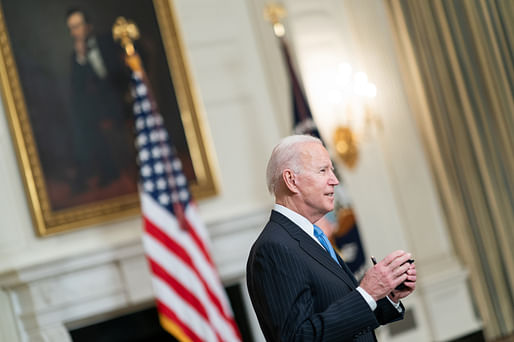
On March 31st, President Biden unveiled his $2 trillion economic plan to "reimagine and rebuild a new economy." The American Jobs Plan aims to "invest in America in a way we have not invested since we built the interstate highways and won the Space Race."
During Wednesday's speech, Biden expressed the need to fix and repair the nation's crumbling roads, bridges, and water systems. While infrastructure covers a wide range, the plan also maps out an emphasis to "build a world-class transportation infrastructure." However, as news outlets quickly report and react to Biden's economic agenda, The Boston Globe's Ian Duncan brings a much-needed perspective that cuts through the repetitive news coverage.
At the forefront, Duncan's coverage brings attention to neighborhoods and roadways with racially historical pasts. He highlights Amy Stelly, an architectural designer and New Orleans resident who raised awareness of the Claiborne Expressway and the historical inequities the highway brought to the community. Duncan also connected with individuals like Ben Crowther, Program Manager at Highways to Boulevards at the Congress for the New Urbanism, to gain insight on his view of Biden's new plan.
It's this response from Crowther that sparks an important reminder of how Biden's plans will impact all, especially marginalized neighborhoods. "This is the first time that we've seen highway and transportation infrastructure considered through a social lens as well as a transportation lens."

Biden expressed during his speech that "this plan is important not only for what and how it builds but [it's] also important to where we build. It includes everyone, regardless of your race or your ZIP code. Too often, economic growth and recovery is concentrated on the coast. Too often, investments have failed to meet the needs of marginalized communities left behind."
While I'm merely scratching the surface with this lofty plan and have not dived into its tax implications and other infrastructure goals, the public's reaction and response to this will continue to unfold as the days progress. However, the promise of increased job opportunities and attention to the social inequities linked to infrastructure does present a hopeful outlook for communities and their relationship to architecture projects as America's infrastructure begins to rebuild.
3 Comments
6% will only go to physical infrastructure
Government will have no oversight of the money and will truly be a disaster.
75% of statistics are made up on the spot.
Despite the critical need to rebuild the collapsing infrastructure this will just be another vast corporate cash grab that results in poor quaility work and huge cost overuns.
And while vast sums are simply printed and handed to Wall Street and the banks, this will have to be paid for with taxes on the lower classes. Pete Butthead wants to tax drivers by the mile.
I'm all for raising the cost of driving but it should be done with a gas tax, which is a system that is already in place. And any revenue raised should go into public transit to provide a viable alternative to personal vehicles and the absurd economic system of production, maintenance, insurance, etc. that it facilitates.
Block this user
Are you sure you want to block this user and hide all related comments throughout the site?
Archinect
This is your first comment on Archinect. Your comment will be visible once approved.